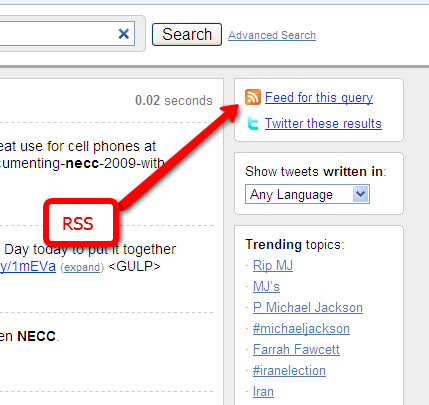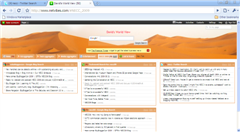 Yesterday, while waiting in line at the Harris Teeter, with the various items Brenda had texted to me, I was mesmerized by the Time Magazine cover to the right. So is Twitter “…changing the way we live?” I was awakened when the cashier started waving her arms to get my attention and as she checked through the milk, broccoli and my special blend of nuts and rice crisps, I mentioned that I was intrigued by the Time cover story on Twitter. She said, “I don’t do it. I don’t even know what it is.”
Yesterday, while waiting in line at the Harris Teeter, with the various items Brenda had texted to me, I was mesmerized by the Time Magazine cover to the right. So is Twitter “…changing the way we live?” I was awakened when the cashier started waving her arms to get my attention and as she checked through the milk, broccoli and my special blend of nuts and rice crisps, I mentioned that I was intrigued by the Time cover story on Twitter. She said, “I don’t do it. I don’t even know what it is.”
So it probably isn’t changing the way that we live, in any substantial way, but it is a very useful, and for many, a very essential tool for sharing and learning.
There are many ways to describe Twitter — none of them foolproof. But in the context of this series, it would probably be most useful to say that Twitter is micro-blogging. When we blog, we type what we want to say into a textbox, submit or publish it, and our message is available to a global audience.
Twitter works exactly the same way with just a few differences. First, and perhaps foremost, Twitter messages (or tweets) are limited to 140 characters. So the messages are short, taking little time to write and little time to read. Another distinguishing feature is that you can not comment on tweets in the same way that you can with blogs. However, you can reply to specifics tweets, which automatically places @tweeter in the message, tweeter being the user name of the person who posted the original statement.
Another important difference is that although tweets are technically available to a global audience, under most circumstances, the only people who automatically receive your tweets are people who have clicked to “Follow” you. This concept has created an interesting authority dynamic, where your “importance” is based on the number of followers you have compared to the number of people you follow. The formula is flawed in a number of ways. For instance, I do not follow very many people, 62 at present. So my importance is deceptively high. But it is interesting, none-the-less, this sense of measuring and drawing meaning from our information landscape.
So, the first thing you have to do is to set up a Twitter account. Here is a YouTube video that will walk you through the process. It’s easy.
The second thing to do is to start following some people. There are a number of services on the Internet that can help you find people to follow. Twellow is essentially a directory of Twitter users. Click [Browse] and then click [Education]. This reveals a number of subcategories, such as e-learning, educational toys, teachers, librarians, etc. If you are a librarian, clicking that subcategory will list the nearly 5,000 school librarian Twitter users, listed in order of their number of followers, so those at the top of the list, with thousands of followers, may be good folks to follow — initially.
Another service called Twits Like Me actually match the nature of your tweets to those of others, intelligently suggesting potential friends to follow. Make sure you are logged in to Twitter, and then type your username into the Twits Like Me textbox and click [Who is Like Me]. The service kept timing out for me so there may be a significant problem with the service — or it may have just been me. You might also try MrTweet. I’ve only just signed on, so we’ll see how it goes.
For the purpose of the upcoming National Education Computing Conference, we can find people who are already tweeting about it, by going to Twitter Search. This is a search engine for the Twitterverse, and typing in necc with a click of the [Search] button reveals a list of the most recent Twitter messages that mention the four letter string. Scan the messages, looking for people of interest. Click their usersname and in most cases you be able to read all of their recent tweets. If it looks like someone who might help you have a better NECC experience, then click the [Follow] button just beneath their icon.
 ..and here is the power of Twitter — that the entire conversation can be searched for the latest that is being said on virtually any topic. And if you have been following me, you’ve probably already trained your eyes to catch the little orange RSS symbol. So we can follow tweets related to NECC as well as blogs. Below is my NECC Netvibes page with NECC tweets coming in.
..and here is the power of Twitter — that the entire conversation can be searched for the latest that is being said on virtually any topic. And if you have been following me, you’ve probably already trained your eyes to catch the little orange RSS symbol. So we can follow tweets related to NECC as well as blogs. Below is my NECC Netvibes page with NECC tweets coming in.
 Following your Twitter conversations can be difficult. Fortunately, you are not limited to continuously updating the Twitter web page. There are a number of third-party applications, Twitter apps, that monitor your Twitter account for you, notifying you of new tweets from friends. The Twitter web site has a listing of applications here, one of which I am especially fond of, called Tweetdeck. In fact, I think I learned about this application at NECC last year.
Following your Twitter conversations can be difficult. Fortunately, you are not limited to continuously updating the Twitter web page. There are a number of third-party applications, Twitter apps, that monitor your Twitter account for you, notifying you of new tweets from friends. The Twitter web site has a listing of applications here, one of which I am especially fond of, called Tweetdeck. In fact, I think I learned about this application at NECC last year.
Tweetdeck offers versions that run on Macs, Windows, Linux (a bit of a bear to install), and now for the iPhone. Like most clients, it will list tweets from the people who follow you, and enable you to post your tweets through the application. However, Tweetdeck is unique in that you can create additional panels to list other categories of tweets, such as replies to your tweets, your direct tweets (Twitter message posted directly and privately to another users — d username). You can also have a panel for specific Twitter search results and Tweetdeck recently added Facebook status updates. The application pretty much takes over your entire screen and adds to my near-constant lament — “Too many channels!”
 But, hands down, Twitter will make NECC a more valuable experience for one and all.
But, hands down, Twitter will make NECC a more valuable experience for one and all.

Some nice web tools I’ve seen recently for event tweet tags like NECC:
* Visible Tweets- nifty visualization, nice for display areas http://visibletweets.com/
* Twazzup – corrals the commons tweets by hash tags, but also tracks most outgoing links, related flickr photos, and links to contributors http://www.twazzup.com/
* TwapperKeepr – aggregates all tweets into one place http://twapperkeeper.com/ or PrintYourTweets http://printyourtwitter.com
I look forward to meeting you during NECC. I’ll be there Sunday afternoon through Wednesday afternoon.
Twitter sure did expand NECC for me, and I was there. I love Tweetdeck – during NECC, I had a column setup that searched for the conference hashtag so I knew what what going on. It was great.